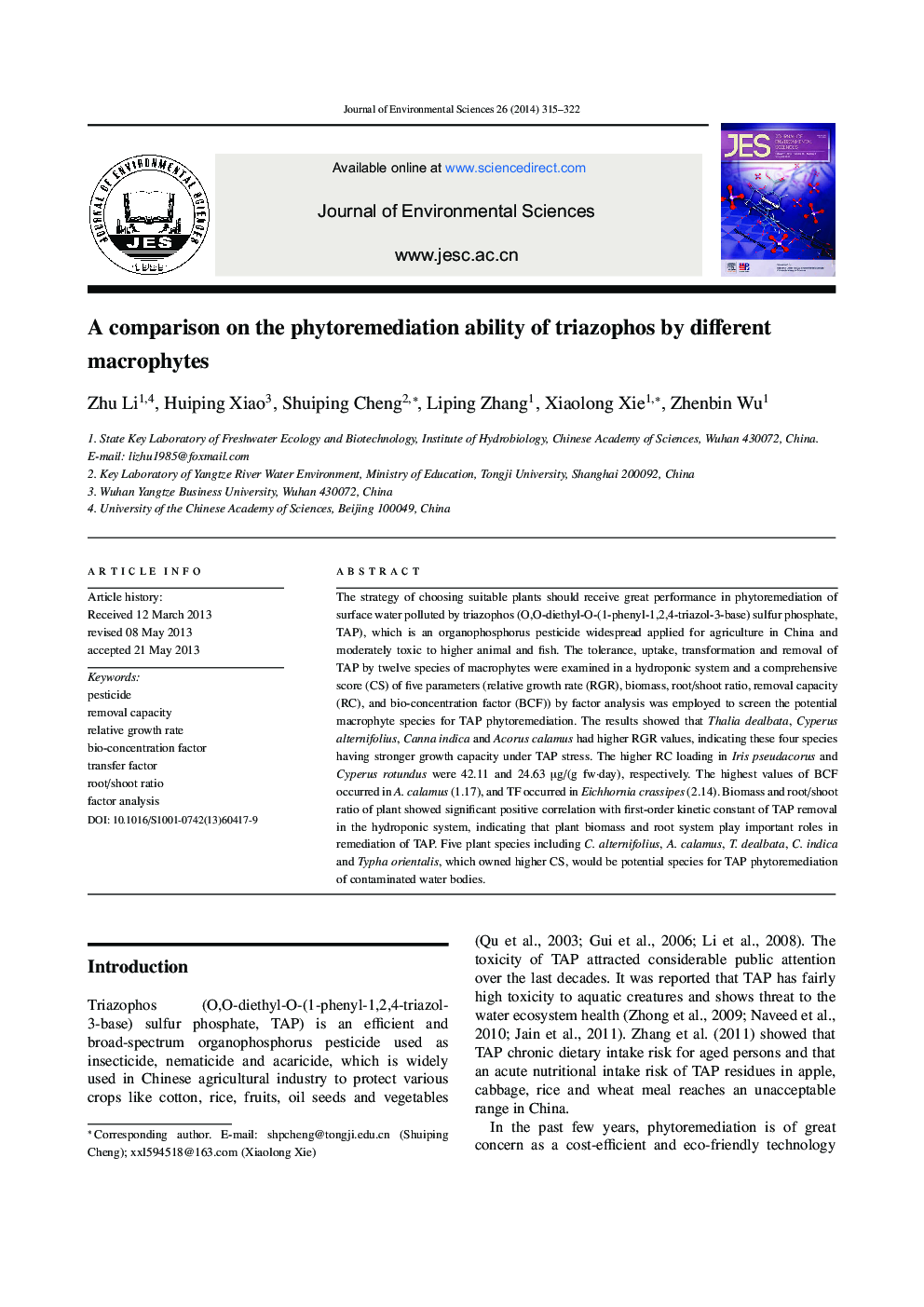| کد مقاله | کد نشریه | سال انتشار | مقاله انگلیسی | نسخه تمام متن |
|---|---|---|---|---|
| 4454650 | 1312489 | 2014 | 8 صفحه PDF | دانلود رایگان |
The strategy of choosing suitable plants should receive great performance in phytoremediation of surface water polluted by triazophos (O,O-diethyl-O-(1-phenyl-1,2,4-triazol-3-base) sulfur phosphate, TAP), which is an organophosphorus pesticide widespread applied for agriculture in China and moderately toxic to higher animal and fish. The tolerance, uptake, transformation and removal of TAP by twelve species of macrophytes were examined in a hydroponic system and a comprehensive score (CS) of five parameters (relative growth rate (RGR), biomass, root/shoot ratio, removal capacity (RC), and bio-concentration factor (BCF)) by factor analysis was employed to screen the potential macrophyte species for TAP phytoremediation. The results showed that Thalia dealbata, Cyperus alternifolius, Canna indica and Acorus calamus had higher RGR values, indicating these four species having stronger growth capacity under TAP stress. The higher RC loading in Iris pseudacorus and Cyperus rotundus were 42.11 and 24.63 μg/(g fw·day), respectively. The highest values of BCF occurred in A. calamus (1.17), and TF occurred in Eichhornia crassipes (2.14). Biomass and root/shoot ratio of plant showed significant positive correlation with first-order kinetic constant of TAP removal in the hydroponic system, indicating that plant biomass and root system play important roles in remediation of TAP. Five plant species including C. alternifolius, A. calamus, T. dealbata, C. indica and Typha orientalis, which owned higher CS, would be potential species for TAP phytoremediation of contaminated water bodies.
Journal: Journal of Environmental Sciences - Volume 26, Issue 2, 1 February 2014, Pages 315-322
